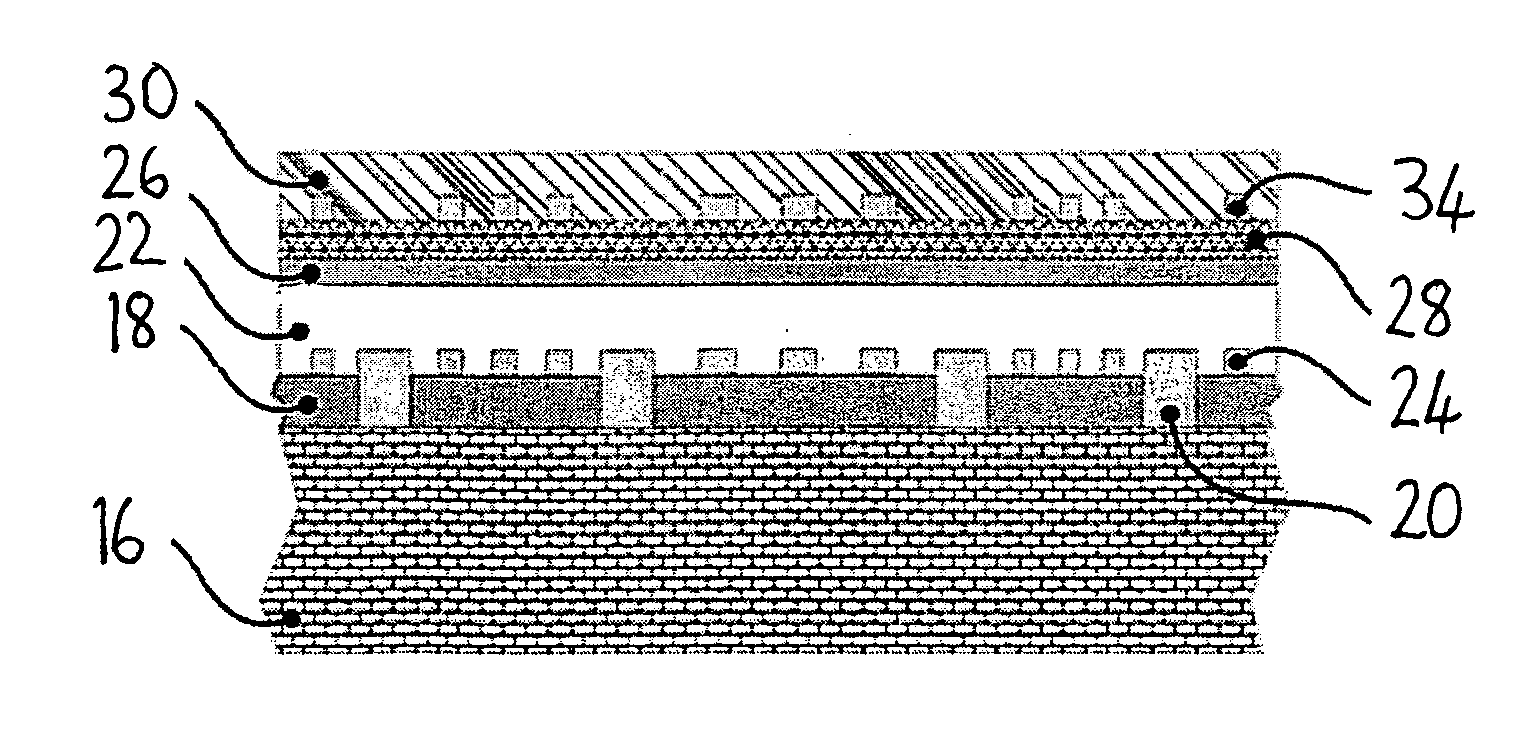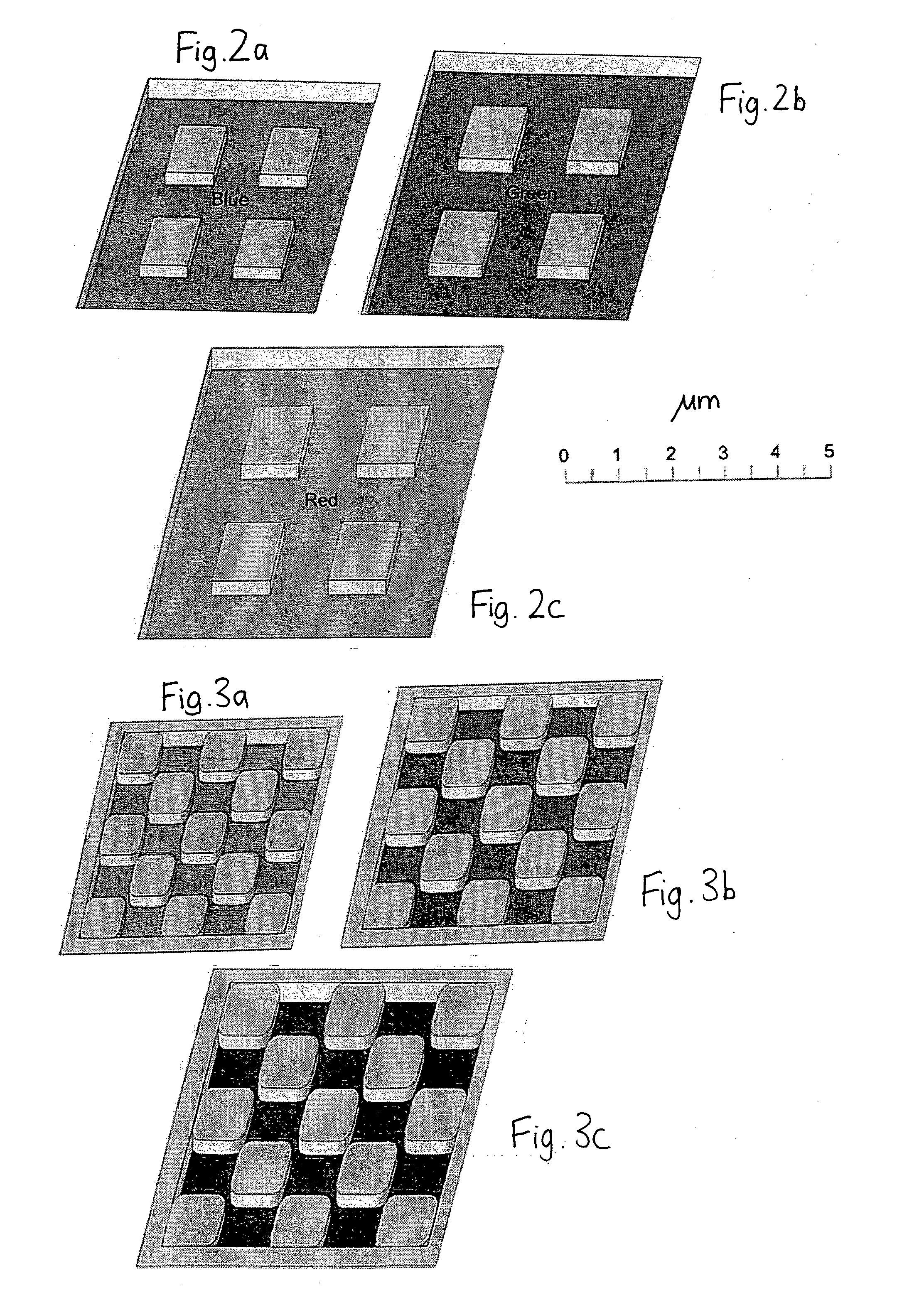Colour Optoelectronic Device
a technology of optoelectronic devices and colours, applied in the field of micro-displays, can solve the problems of low chance of escaping a photon from the device, device light extraction problems, and serious limitations in the external efficiency of leds, and achieve the effect of maximising the effect of the photonic crystal
- Summary
- Abstract
- Description
- Claims
- Application Information
AI Technical Summary
Benefits of technology
Problems solved by technology
Method used
Image
Examples
Embodiment Construction
[0019]FIG. 1a shows a photonic lattice configured with pillars 1 of insulating material within an emissive area 2. FIG. 1b shows an alternative lattice with emitting sub-sub-pixels 3 confined with walls 4 of insulating material. FIG. 1c shows a lattice formed from a higher density matrix of pillars 5 and FIG. 1d shows a more realistic shape for the pillars 5′ fabricated by photolithography.
[0020]It is feasible to engineer such photonic lattice structures into a microdisplay device because semiconductor pattering technology, in particular CMOS technology, has the capability of patterning metal (typically aluminium) and insulator (silicon oxide or silicon nitride) to very high resolution (<0.5 μm).
[0021]Careful design of the spacing of a photonic lattice will provide enhanced out coupling of a certain wavelength of light. By engineering RGB sub-pixels to have difference and appropriate lattice spacing it is possible to enhance the outcoupling of a particular wavelength from each sub-p...
PUM
 Login to View More
Login to View More Abstract
Description
Claims
Application Information
 Login to View More
Login to View More - R&D
- Intellectual Property
- Life Sciences
- Materials
- Tech Scout
- Unparalleled Data Quality
- Higher Quality Content
- 60% Fewer Hallucinations
Browse by: Latest US Patents, China's latest patents, Technical Efficacy Thesaurus, Application Domain, Technology Topic, Popular Technical Reports.
© 2025 PatSnap. All rights reserved.Legal|Privacy policy|Modern Slavery Act Transparency Statement|Sitemap|About US| Contact US: help@patsnap.com



